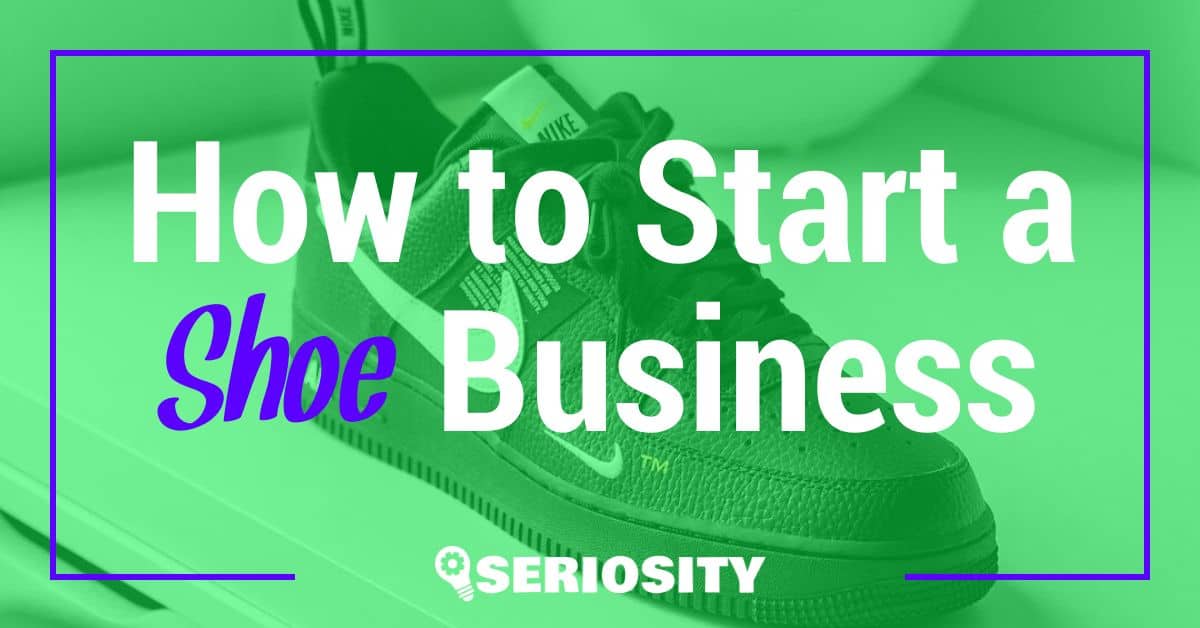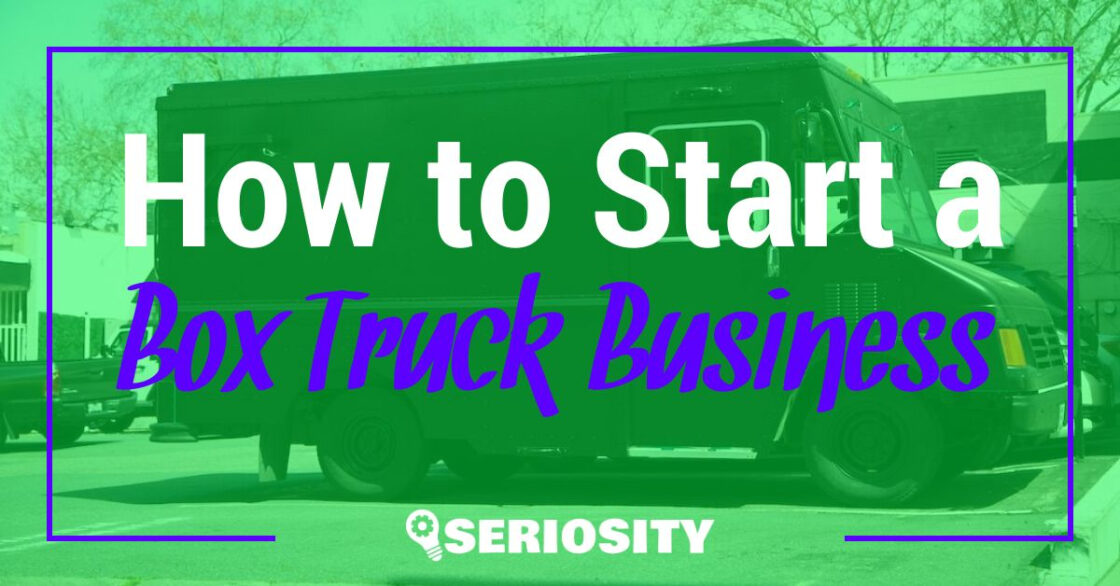Starting a shoe business can be an exciting and rewarding venture for entrepreneurs with a passion for footwear and design. The global footwear market continues to thrive, providing ample opportunities for newcomers to make their mark in the industry. However, embarking on this journey does require a strategic approach in order to effectively navigate the various stages of building a successful shoe brand.
Before diving into the specifics of starting a shoe business, it’s crucial to conduct thorough research to gain a solid understanding of the industry, the niche you want to cater to and the various business models that can be adopted. Following this initial analysis, developing a comprehensive business plan will help clarify the company’s objectives and provide a roadmap for its growth. In addition, securing the necessary permits and licenses, establishing an accounting system, and creating a strong brand identity will be the foundation upon which your business is built.
In this article, we will provide you with the essential steps to start a shoe business, from choosing the right niche and business model to scaling and expanding your brand. By following these guidelines, you’ll be well-equipped to create a thriving shoe enterprise that appeals to your target market and stands out from the competition.
Understanding the Shoe Industry
Footwear Market Analysis
The shoe industry is a significant sector in the global market, with sales of footwear reaching billions of dollars each year. In order to successfully start a shoe business, you need to have a solid understanding of the industry trends and consumer demands. This includes identifying:
- The various types of footwear (e.g., athletic, casual, dress, and specialty shoes)
- The demand and market share for each footwear category
- Regional market differences, as some areas may have a higher demand for specific types of footwear (e.g., warmer climates requiring more sandals)
Researching these aspects will help you determine the most profitable niche within the shoe industry and the type of products that reliably appeal to your target audience. This can also assist in setting up a more effective marketing strategy for your business.
Competition
As a new entrant to the shoe business, you must be aware of the competition in the market, which includes both established and emerging brands. To effectively position yourself against competitors, consider the following:
- Analyze competitors’ products, pricing, and marketing strategies
- Identify their strengths and weaknesses
- Look for gaps in the market where you can potentially offer a unique product or service
Some potential strategies to stand out from the competition may include offering exceptional customer service, competitive pricing, distinctive and innovative designs, or eco-friendly materials.
When starting a shoe business, you also have the option of choosing between several business models, such as brick-and-mortar retail, online retail, or a combination of both. Each of these options has its own set of challenges and benefits. For example, brick-and-mortar stores provide a direct customer experience and the opportunity for in-person sales, while online retail can reach a larger audience and typically requires lower overhead costs.
In summary, understanding the shoe industry’s market dynamics and competition is crucial before starting your business. By conducting a thorough market analysis and evaluating your competitors, you can position your shoe business for success and ensure you have a solid foundation for profitable growth.
Creating Your Business Plan
Executive Summary
In this section, provide a brief overview of your shoe business, including its mission, vision, and unique selling proposition. Describe the niche and target audience you will serve, highlighting any specific demographic or market segment your business will cater to.
Market Research
Conduct in-depth market research to understand the scope of the shoe industry, identifying key trends, and analyzing the competition. You should focus on:
- The size and growth of the industry
- Major players and their market share
- Opportunities and threats in the market
- Gaps or unmet needs that your business can fulfill
Products/Services
List and describe the shoe products and/or services your business will offer, including specific features, styles, and materials. Make sure to differentiate your products or services from those offered by your competitors, emphasizing any unique selling propositions that will set your business apart from others in the industry.
| Product/Service | Description | Unique Selling Proposition |
|---|---|---|
| Example Shoe A | Description A | USP A |
| Example Shoe B | Description B | USP B |
Operational Plan
Outline the daily operations of your shoe business, detailing how you will deliver your products or services, manage inventory, and ensure customer satisfaction. Your operational plan should cover aspects such as:
- Staffing needs and responsibilities
- Manufacturing processes and resources
- Distribution and logistics
- Retail or e-commerce strategies (if applicable)
Marketing Plan
Create a comprehensive marketing plan that specifies your target market, marketing objectives, and strategies to reach your audience. Your marketing plan should cover:
- Branding (logos, packaging, etc.)
- Advertising and promotions (online and offline)
- Public relations efforts
- Social media and digital marketing strategies
Financial Plan
Develop a detailed financial plan that illustrates the costs and projected revenue for your shoe business. This section should include:
- Start-up expenses and funding requirements
- Sales forecasts
- Profit and loss projections
- Cash flow statements
- Balance sheet forecasts
Ensure that you use realistic assumptions and provide a clear and concise explanation for each financial projection to establish credibility with potential investors or lenders.
Determining Your Brand Identity
Determining your brand identity is a critical step when starting a shoe business. Your brand identity will set the tone for how customers perceive your products and company, so it’s essential to create a strong and consistent identity.
To start with, you should develop a clear understanding of what sets your shoe brand apart from competitors. You may want to consider the unique features of your products or your overall business mission. For example, your shoe brand could focus on vegan materials or emphasize sustainable manufacturing practices.
Once you have identified your unique selling proposition (USP), the next step is to create a suitable name for your shoe brand. Choose a name that resonates with your target audience and reflects your USP. Your business name will play a significant role in creating a powerful brand identity, so take the time to brainstorm and evaluate several options before settling on the final choice.
With a name in place, you can now focus on developing the visual aspects of your brand identity. This includes creating a memorable logo, selecting a color palette, and designing a unique typography. The fonts, colors, and images you choose should align with your brand’s personality and values, helping to create a cohesive look and feel across all marketing materials and product packaging.
Here are a few key elements to keep in mind while building your brand identity:
- Logo: Your logo should be distinctive and easily recognizable. It will serve as a visual representation of your brand, so make sure it reflects your business name and USP.
- Color Palette: Choose a color scheme that aligns with your brand’s personality and values. You may want to use colors that evoke specific emotions or are associated with particular characteristics (e.g., red for passion, blue for trust).
- Typography: Select fonts that complement your logo and overall visual identity. Using consistent typography across all materials will help establish a recognizable and professional look.
- Imagery: Use high-quality, relevant images to convey your brand’s message and personality. Photos and illustrations should align with your brand identity and enhance the overall user experience.
By carefully crafting your brand identity, you will establish a solid foundation for your shoe business, helping you to stand out in a competitive market and build a loyal customer base.
Selecting a Business Structure
Choosing the right business structure is crucial for your shoe business, as it will impact tax obligations, legal liabilities, and operational flexibility. In this section, we will explore different types of business structures and their pros and cons.
Sole Proprietorship
A sole proprietorship is the simplest and most common structure for small businesses. It’s suitable for single-owner businesses and doesn’t require formal registration.
- Pros:
- Easy to set up and maintain
- Minimal legal requirements
- Direct control over business decisions
- Cons:
- Unlimited personal liability for business debts
- Difficulty raising capital
Partnership
A partnership is a business structure in which two or more individuals share ownership and decision-making. There are two primary types of partnerships: general partnerships and limited partnerships.
- Pros:
- Shared management and financial responsibilities
- Broader access to capital
- Potentially more diverse skillset
- Cons:
- Unlimited personal liability for general partners
- Potential conflicts in decision-making
Limited Liability Company (LLC)
An LLC combines the benefits of a corporation and a sole proprietorship or partnership, offering legal protection and tax advantages.
- Pros:
- Limited personal liability for business debts
- Pass-through taxation avoiding double-taxation
- Flexible in terms of management structure
- Cons:
- More paperwork and cost to establish and maintain
- Different tax regulations in each state
Corporation
A corporation is a separate legal entity from its owners, providing the most protection from personal liability for its shareholders. Corporations can be either be C corporations or S corporations.
- Pros:
- Limited personal liability
- Easier to raise capital through stock issuance
- Ownership can be easily transferred through stock sales
- Cons:
- More expensive and complex to set up and maintain
- Potential double taxation (profits taxed at the corporate level and again when distributed as dividends)
When deciding on a business structure for your shoe business, consider factors such as the size of your business, the level of personal liability you prefer, and the tax implications for different structures.
Obtaining Licenses and Permits
Starting a shoe business involves obtaining the necessary licenses and permits. These depend on the type of shoe business you plan on starting, and the jurisdiction you are operating in.
First, register your business with the appropriate government agency. This will typically require you to fill out an application and submit it to your local licensing authority. They will review your application and decide whether or not to issue you a business license.
Now, let’s discuss the main types of licenses and permits you may need:
- Business License: This is a general requirement for all businesses. It authorizes your shoe store to operate legally within a specific jurisdiction. Check with your local government offices for requirements and fees.
- Sales Tax Permit: If you are selling shoes to consumers, you will likely need a sales tax permit. This allows you to collect sales tax from customers and remit it to the appropriate authorities. Check with your state tax agency for registration and specific rules.
- Federal Licenses and Permits: Some business activities are regulated at the federal level. Check to see if your shoe business falls into this category, and then inquire with the respective federal agency about application requirements and fees.
Some additional permits and licenses you may need include:
- Sign Permit: If you plan to have a physical storefront, you may need a permit from your local government to display signage.
- Health and Safety Permits: Depending on your jurisdiction, you might need to adhere to specific health and safety regulations and obtain relevant permits.
In summary, research and apply for the licenses and permits specific to your shoe business and its location. Ensure you stay compliant with all applicable laws and regulations.
Financing Your Shoe Business
Startup Costs
When starting a shoe business, it is crucial to consider the various startup costs involved. These expenses can include:
- Inventory: Purchasing an initial stock of shoes to sell;
- Marketing: Promoting your business through advertising and other outreach efforts;
- Business registration and licensing: Fees associated with establishing your legal business entity;
- Equipment: Displays, storage, and technology for your retail location or online platform;
- Rent and utilities: The cost of your physical store location.
It is critical to calculate and plan for these startup costs to establish a financially sound business.
Funding Options
There are numerous funding options available to aspiring shoe business owners. Some popular financing methods for starting a shoe business include:
- Bootstrapping: Use your personal savings to cover the initial startup costs.
- Credit cards: Utilizing a credit card to finance initial costs can be a quick and convenient way to fund your business. However, be aware of the high interest rates and potential damage to your credit score.
- Bank loans: Traditional bank loans or Small Business Administration (SBA) loans can offer more favorable terms and interest rates, but usually require collateral and a strong credit history.
- Angel investors: These are wealthy individuals who invest in businesses in exchange for equity or future profits. They offer valuable mentorship and guidance, but it might be challenging to find an angel investor who shares your vision.
- Crowdfunding: Platforms such as Kickstarter or Indiegogo provide the opportunity to raise funds from a large number of people by offering incentives in exchange for their contributions.
It is essential to research and carefully evaluate each option to determine the best way to finance your shoe business. Doing so will set your business on the right path to success in the competitive footwear industry.
Setting up Your Shoe Business
Business Bank Account
Opening a separate business bank account for your shoe business is essential to manage funds and track expenses accurately. A clear distinction between your personal and business finances also makes tax filing easier. Shop around and compare fees, services, and benefits offered by different banks to find an account that meets your business needs. Here are some factors to consider when choosing a bank:
- Transaction fees and charges
- Account access and online banking
- Customer support options
Credit Cards
A business credit card can be a valuable tool for your shoe business, as it allows you to manage your cash flow, track expenses, and earn rewards on your spending. When choosing a credit card, consider:
- Interest rates
- Reward programs
- Credit limits
- Fees and charges
- Security features and fraud protection
Employer Identification Number (EIN)
An Employer Identification Number (EIN), also known as a Federal Tax Identification Number, is required for your business if you plan to hire employees or file taxes as a separate entity. This unique identifier is issued by the Internal Revenue Service (IRS), and you can apply for an EIN online or by mail. Having an EIN enables you to:
- Open a business bank account
- Apply for business credit cards
- File tax returns
- Apply for permits and licenses
- Register your business with state and local authorities
Insurance
Obtaining appropriate insurance coverage is crucial for your shoe business to protect against potential risks and liabilities. Some common types of business insurance to consider include:
- General liability insurance: Covers accidents, injuries, and negligence claims
- Workers’ compensation insurance: Covers medical expenses and lost wages for employees injured on the job
- Product liability insurance: Protects against claims related to product defects or malfunctions
- Business property insurance: Covers damage or loss of business property or equipment
Be sure to research different insurance providers and their plans to find the best coverage for your shoe business at a competitive price.
Choosing Your Inventory
Initial Inventory
When starting your shoe business, it’s essential to carefully select your initial inventory. You’ll want to offer a variety of styles, sizes, and price points to appeal to a wide range of customers. Here’s a suggested process to follow:
- Identify your target market – Knowing your potential customers’ preferences will help you choose the right products for your inventory. Consider factors such as age, gender, and income levels.
- Research trends – Stay up-to-date on the latest footwear trends and styles, as they will greatly influence your customers’ purchasing decisions.
- Select brands and styles – Choose a mix of popular and niche brands that cater to your target audience. Variety is crucial as it meets the diverse tastes of potential buyers.
- Consider seasonality – Ensure your inventory includes current seasonal offerings. For example, summer calls for sandals and flip-flops, while winter demands boots and warm materials.
Creating a list of shoe types, styles, and sizes before purchasing can make the process more manageable and ensure you have enough stock without overbuying.
Wholesale
Purchasing wholesale is an effective way to source your shoe inventory, as it offers competitive prices and access to a vast selection of products. To find the best wholesale suppliers, consider the following steps:
- Research suppliers – Look for reputable wholesale suppliers in your region. You can find them through industry-specific trade shows or online marketplaces like Alibaba or Global Sources.
- Compare prices and quality – Request price lists and product catalogs from several suppliers. Aim to strike a balance between competitive pricing and high-quality products for the best return on investment.
- Evaluate customization options – If you plan on offering unique or custom designs, verify that the supplier can accommodate your requirements. Customization adds a touch of exclusivity and personalization to your inventory.
- Consider minimum order quantities – Factor in the supplier’s minimum order quantity (MOQ) in your purchasing decisions. Ensure the MOQ aligns with your budget and inventory needs, as it can impact cash flow and storage requirements.
Taking the time to find reliable and cost-effective wholesale suppliers can ensure you have a steady supply of quality products while maintaining healthy margins.
Remember that effective inventory management is crucial for the success of your shoe business. Regularly review your sales data and customer feedback to adjust your inventory according to demand and keep up with the ever-changing preferences in the shoe market.
Establishing an Online Presence
Website Development
A strong online presence begins with a well-designed, user-friendly website. Your website should showcase your shoe brand’s unique style and emphasize the quality of your products. Consider the following elements for your website:
- Easy navigation to provide a seamless shopping experience
- Product images with zoom functionality to showcase every detail of your shoes
- A clear and concise product description, including size, materials, and price
- A secure and easy-to-use checkout process
Efficient website platforms like Wix, Squarespace, and WordPress provide user-friendly tools to create your website without any coding knowledge.
Ecommerce Store
Once your website is established, integrating an ecommerce platform will facilitate online sales. Here’s a list of popular ecommerce platforms you can consider.
| Platform | Pricing |
|---|---|
| Shopify | $29.99/month |
| BigCommerce | $29.95/month |
| WooCommerce | $6.95/month |
| Magento | Custom Pricing |
| Weebly | $12/month |
These platforms offer various features like inventory management, payment processing, and shipping integration to maximize your online sales process.
To reach a broader audience, consider listing your products on popular ecommerce marketplaces like Amazon, eBay, and Etsy. These platforms have millions of potential customers, increasing your chances of making a sale.
Social Media Marketing
Creating a strong social media presence can significantly increase brand exposure and engagement. Consider using various social media marketing strategies to promote your shoe business:
- Account creation: Set up accounts on platforms such as Instagram, Facebook, Twitter, and Pinterest where your target audience is most active.
- Content strategy: Post high-quality, engaging content that showcases your shoe designs, tells your brand’s story, and reveals behind-the-scenes insights.
- Influencer collaborations: Partner with influencers to showcase your shoes to their large followings, thereby increasing brand awareness and potential sales.
- Paid advertisements: Run targeted ads on platforms like Instagram and Facebook to reach a larger audience and drive traffic to your ecommerce store.
- Promotions and giveaways: Offer discounts or run giveaways to engage users and incentivize purchases.
Remember, consistency is key in social media marketing. Update your profiles regularly and engage with your audience to generate leads and increase brand loyalty.
Growing Your Shoe Business
As your shoe business takes off, it’s essential to invest in growth strategies that promote your brand and expand your customer base. In this section, we will discuss three vital methods to grow your shoe business, including advertising, customer base expansion, and venturing into the custom shoe business.
Advertising
Effective advertising is crucial for increasing brand visibility and reaching your target market. Explore various advertising channels to promote your products and services:
- Online advertising: Utilize social media platforms, Google Ads, and fashion influencers to reach potential customers.
- Print advertising: Make use of fashion magazines and local publications to showcase your products.
- Events and Sponsorships: Participate in fashion shows, events, and sponsorships to boost your brand recognition and network with industry insiders.
Track and analyze the success of each advertising effort to optimize your marketing strategy and focus on channels with the highest return on investment.
Customer Base Expansion
Growing your customer base is a key factor in the success of your shoe business. Consider implementing the following strategies to expand your target market:
- Diversify your product offerings: Keep up with fashion trends, and offer a wide range of products or services to cater to different customer preferences.
- Seasonal collections: Introduce special collections for holidays and seasonal events, to attract new customers and encourage regulars to purchase from your limited-edition products.
- Loyalty programs: Establish loyalty programs to reward repeat customers, and encourage them to refer others to your store.
- Collaborations: Partner with established brands or designers to create unique collections, increasing your brand’s recognition and appeal.
Custom Shoe Business
Venturing into the custom shoe business can help set your company apart from competitors and cater to customers looking for personalized, one-of-a-kind footwear. Consider implementing the following strategies for success in the custom shoe market:
- Offer customization options: Allow customers to choose from a variety of styles, materials, colors, and design elements to create their ideal footwear.
- Provide excellent customer service: Customization can be an involved process, requiring clear communication and support throughout the design and production process.
- Develop a user-friendly customization platform: Invest in a well-designed platform where customers can easily visualize and create their custom shoes, improving their overall experience, and increasing the likelihood of repeat business.
Utilizing these growth strategies, you can enhance your shoe business by reaching new customers, staying ahead of fashion trends, and expanding into the custom shoe market.





